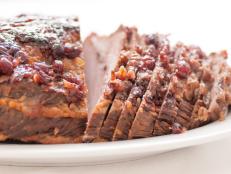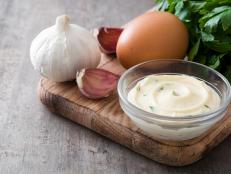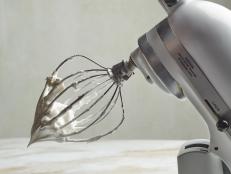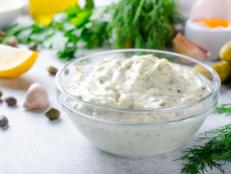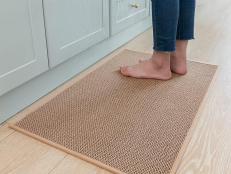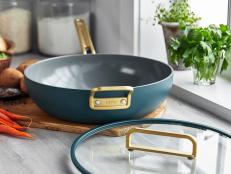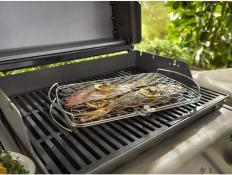How to Clean a Pizza Stone
Less is more when it comes to keeping this kitchen tool shipshape.

EzumeImages/Getty Images
Better crusts and shorter cooking times are the draw of a pizza stone: Its ability to hold heat, browning the bottom of the crust for great flavor and a hint of crispiness while keeping the interior pillowing and chewy, makes it a favorite for those hooked on pizza at home. Devotees see it as the next best thing to a brick oven. But how do you keep it in tip-top shape? The answer is refreshingly easy: The less you do the better for maintaining your stone.
What Is a Pizza Stone?
A pizza stone is not actually made of stone, but rather a thick flat piece of unglazed clay. It’s designed to absorb heat and hold it, mimicking the floor of a brick oven, and its porous surface lets moisture escape easily. Without a stone most kitchen ovens can’t produce the type of crust Neapolitan and New York pizzas are famous for. And ever wondered how your neighborhood brick-oven pizzeria can pump out perfect pies in just about 10 minutes? It’s thanks to cooking on a heat-absorbing, heat-holding surface: Once the base is preheated, even your home oven can cook pie after pie much quicker than the 20 minutes (or more) it could take on a sheet pan. Intrigued? Learn more about cooking with a stone here.
How to Clean a Pizza Stone

mtreasure/Getty Images
The mechanics of cleaning a pizza stone are incredibly easy — all you need is the patience to cool it completely, brush off food, then gently scrub, rinse and air dry if necessary.
Very little upkeep is required to keep your stone in good shape for years — even decades — of delicious baking. Just keep two key facts in mind when handling it: The surface is porous, so it absorbs flavors and odors easily, and any sudden change in temperature, known as “thermal shock,” can lead to cracking. Finally, the stone’s surface will discolor and may develop brown or black spots over time: This is natural, so embrace these changes as evidence of many happy meals. Here’s how to care for your stone after every use. Do, however, read the manufacturer's instructions for your stone and follow those if they differ.
Step 1: Cool It Completely
A pizza stone needs to change temperature slowly to avoid cracking or even exploding. Let it cool right in the oven if you can — this saves you the step of lifting a heavy and very hot stone. Or use oven mitts and carefully place the stone on a rack to cool.
Step 2: Brush Off Crumbs
When absolutely cool (this could take an hour or more) use a stiff brush to remove loose bits of food. If the stone is otherwise clean this is all you need to do — really! If there’s stuck-on bits you should proceed to steps 3 and 4.
Step 3: Rinse and Scrub
Make sure the stone is absolutely cool and rinse it briefly (never soak) under warm water. Scrub with a stiff brush to remove any food; soap is unnecessary and the porous surface of the stone could absorb some, making your next pie taste soapy. Use coarse salt or baking soda if you think an abrasive product is necessary, but don’t overdo it: Changes in color and some staining is normal.
Step 4: Rinse and Dry
Give your stone a final quick rinse (don’t let it soak). Wipe the stone with a cloth, leave it to air dry and then store it correctly.
How to Store a Pizza Stone
Many pizza stone fans keep their stones in the oven at all times, letting it heat up and cool down every time they turn the oven on. This has a few advantages: It eliminates transferring the heavy stone back and forth from cabinet to oven, so you don’t risk dropping it, and it can act as a temperature stabilizer in the oven, minimizing hot spots. Plus, if you use the stone frequently you won’t have to remember to slip it into the cold oven every time you make pizza.
But oven storage isn’t practical for everyone. The stone can take up valuable space if your oven is small, and it will slightly increase the oven’s preheat time. Or you might find baking around it just kind of awkward. If so designate a safe place in your cabinet or pantry for it; avoid chips and cracks by ensuing nothing heavy like a cast-iron skillet or Dutch oven sits on top of it or bumps it. With simple care you’ll have years of pizza joy.
Related Links:
























